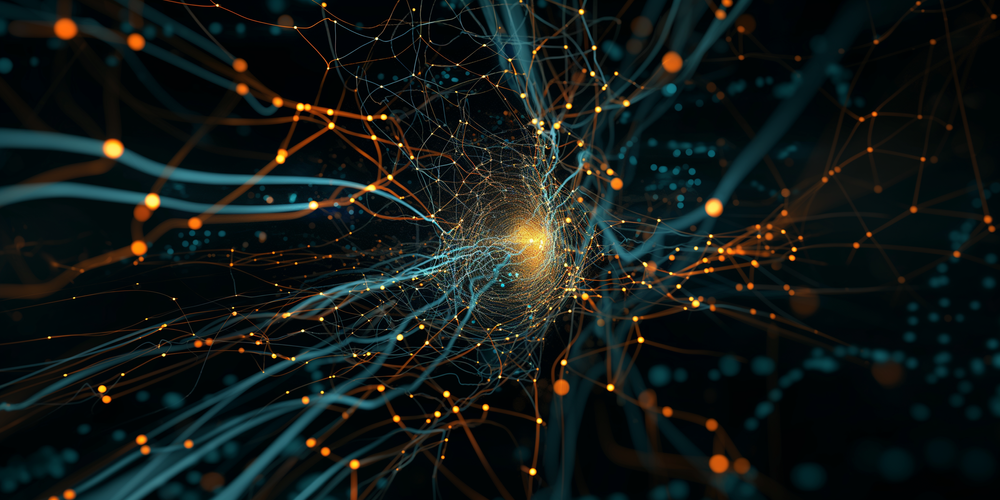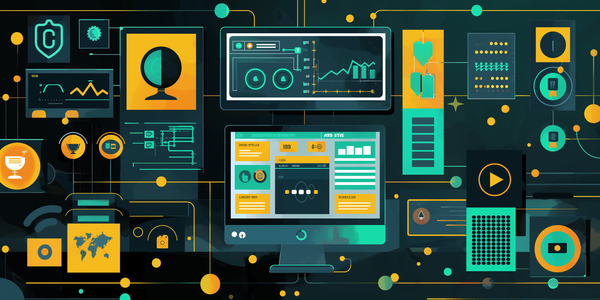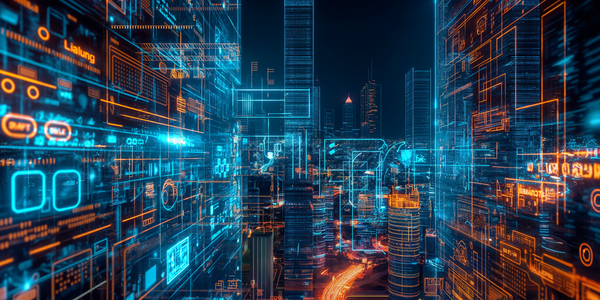The AI Revolution: Unveiling the Truth Behind Generative AI's Global Impact
Introduction
In a groundbreaking leap forward, Google's recent unveiling of its Gemini AI platform has shattered the boundaries of what we thought possible in artificial intelligence. This multimodal powerhouse, capable of seamlessly integrating text, code, audio, image, and video inputs, isn't just another incremental step—it's a quantum leap that fundamentally reshapes the AI landscape. Yet, as we stand on the precipice of this AI revolution, we must confront an uncomfortable truth: the rapid advancement of generative AI is outpacing our ability to understand and control its implications.
The transformative potential of generative AI is no longer a distant future—it's our present reality. From accelerating drug discovery to revolutionizing creative industries, AI's tendrils are reaching into every corner of our lives. Consider this: NVIDIA and Insilico Medicine's AI-powered drug discovery platform has slashed the time to identify potential drug candidates from years to mere days, potentially saving countless lives. But with great power comes great responsibility, and the ethical implications of such rapid advancement are profound and far-reaching.

This newsletter draws upon exclusive insights from leading AI researchers, policymakers, and industry pioneers across five continents, offering a truly global perspective on the state of generative AI. We'll delve deep into the technical intricacies of these systems, exploring not just their capabilities, but their limitations and potential pitfalls. How do we ensure that AI-driven decisions in critical fields like healthcare and finance are transparent and accountable? What safeguards can we implement to prevent the misuse of increasingly sophisticated AI-generated content? And perhaps most crucially, how do we navigate the economic upheaval that widespread AI adoption may trigger?
As we peer into the future, one thing becomes clear: the next 180 days will be pivotal in shaping the trajectory of generative AI. We stand at a crossroads, where the decisions we make today will echo through generations. This newsletter is not just an analysis—it's a call to action. The AI revolution waits for no one, and the time to engage, understand, and shape its future is now. Are you prepared to navigate this brave new world?
The AI Zeitgeist
Artificial intelligence isn't just augmenting human capabilities—it's fundamentally redefining the boundaries of human creativity and productivity. In the past 60 days, three paradigm-shifting generative AI developments have emerged, each poised to revolutionize their respective domains:
- IBM's 'Catch Me Up' at Wimbledon:
- Impact: This AI-powered feature will democratize tennis fandom, making the sport more accessible and engaging to a global audience.
- Counterintuitive consequence: By providing personalized, AI-generated content, it may inadvertently create echo chambers, potentially narrowing fans' perspectives rather than broadening them.
- Metric: 55% of global tennis fans surveyed believe AI will positively impact sports, indicating a significant shift in audience receptiveness to AI-enhanced experiences.
- Microsoft's Copilot for Microsoft 365:
- Impact: Copilot will redefine workplace productivity, potentially doubling the creative output of knowledge workers.
- Counterintuitive consequence: As AI assists in content creation, the value of human creativity may paradoxically increase, with uniquely human insights becoming more prized.
- Metric: Copilot is integrated into apps used by millions daily, with the potential to impact over 300 million paid Microsoft 365 users worldwide.
- OpenAI's Sora:
- Impact: Sora will democratize video production, enabling anyone to create cinema-quality content from text descriptions.
- Counterintuitive consequence: As video creation becomes ubiquitous, the scarcity of human attention may lead to a "creativity crisis," where standing out becomes increasingly challenging.
- Metric: Sora can generate up to one minute of high-quality video from a single text prompt, a capability previously unheard of in AI systems.
Reality Check:
While these AI advancements promise transformative potential, several limitations persist:
- Data privacy concerns and potential biases in AI-generated content
- The need for human oversight and fact-checking to ensure accuracy
- Limited availability and high computational requirements for some AI models
- Ethical considerations surrounding AI-generated content and its potential misuse
As we navigate this AI revolution, balancing innovation with responsible development remains crucial. How can we harness these transformative technologies while mitigating their potential negative consequences?

Deep Dive: Visual Generative AI - Art's New Frontier or Creativity's Demise?
Is visual generative AI revolutionizing artistic expression or spelling the end of human creativity as we know it?
Technical Breakdown:
Visual generative AI is like a master chef who can whip up gourmet dishes from a list of ingredients. Just as a chef combines flavors and textures to create culinary masterpieces, these AI models blend pixels and patterns to generate stunning visual content.
Imagine a chameleon that can instantly transform its appearance based on verbal descriptions. Visual generative AI similarly morphs digital canvases into vivid images matching text prompts with uncanny accuracy.
At the core of many visual generative AI models is the diffusion process. This involves gradually adding noise to an image and then learning to reverse this process. The model starts with pure noise and iteratively refines it, guided by the text prompt, until a clear image emerges. This approach, known as latent diffusion, allows for high-quality image generation while being computationally efficient.
Industry Disruption Analysis:
- Advertising:
Thriving: Canva - Their integration of AI-powered design tools positions them to capitalize on the trend.
Suffering: Getty Images - Their traditional stock photo model faces challenges from AI-generated alternatives. - Gaming:
Thriving: Unity Technologies - Their game development platform is well-positioned to incorporate AI-generated assets.
Suffering: Traditional art outsourcing companies may struggle as game studios turn to AI for asset creation. - Fashion:
Thriving: Stitch Fix - Their data-driven approach to fashion could be enhanced by AI-generated designs.
Suffering: Traditional fashion forecasting companies may become obsolete as AI predicts and generates trends.
Challenging Common Beliefs:
- Myth: "AI-generated art lacks originality."
Reality: AI can create truly novel combinations and styles, as evidenced by the diverse outputs of models like DALL-E and Midjourney. - Myth: "AI will replace human artists entirely."
Reality: AI is more likely to become a tool that augments human creativity rather than replacing it entirely, similar to how digital tools didn't eliminate traditional art forms. - Myth: "AI-generated art is easy and requires no skill."
Reality: Crafting effective prompts and curating AI outputs requires significant artistic vision and technical knowledge.
Global Perspectives:
"AI art generation is not just a technological advancement, but a cultural revolution that will redefine how we perceive and create visual content," says Dr. Yann LeCun, Chief AI Scientist at Meta.
"In China, we see visual generative AI as a tool to bridge traditional art forms with modern technology, creating new avenues for cultural expression," notes Dr. Fei-Fei Li, Co-Director of Stanford's Human-Centered AI Institute.
"While AI art presents exciting possibilities, we must ensure it doesn't erase the rich tapestry of human artistic traditions," cautions Olatunde Oshodi, Nigerian AI researcher and artist.
Ethical Minefield:
- Copyright Infringement:
Pro: AI companies argue their models create original works inspired by, but not copying, existing art.
Con: Artists claim their work is being used without consent to train AI models, effectively stealing their style. - Job Displacement:
Pro: AI will create new jobs and opportunities in prompt engineering and AI art curation.
Con: Traditional illustrators and designers may face significant career disruption. - Authenticity and Value:
Pro: AI art can be seen as a new medium, with value derived from concept and curation.
Con: The ease of generating AI art may devalue the perceived effort and skill in art creation.
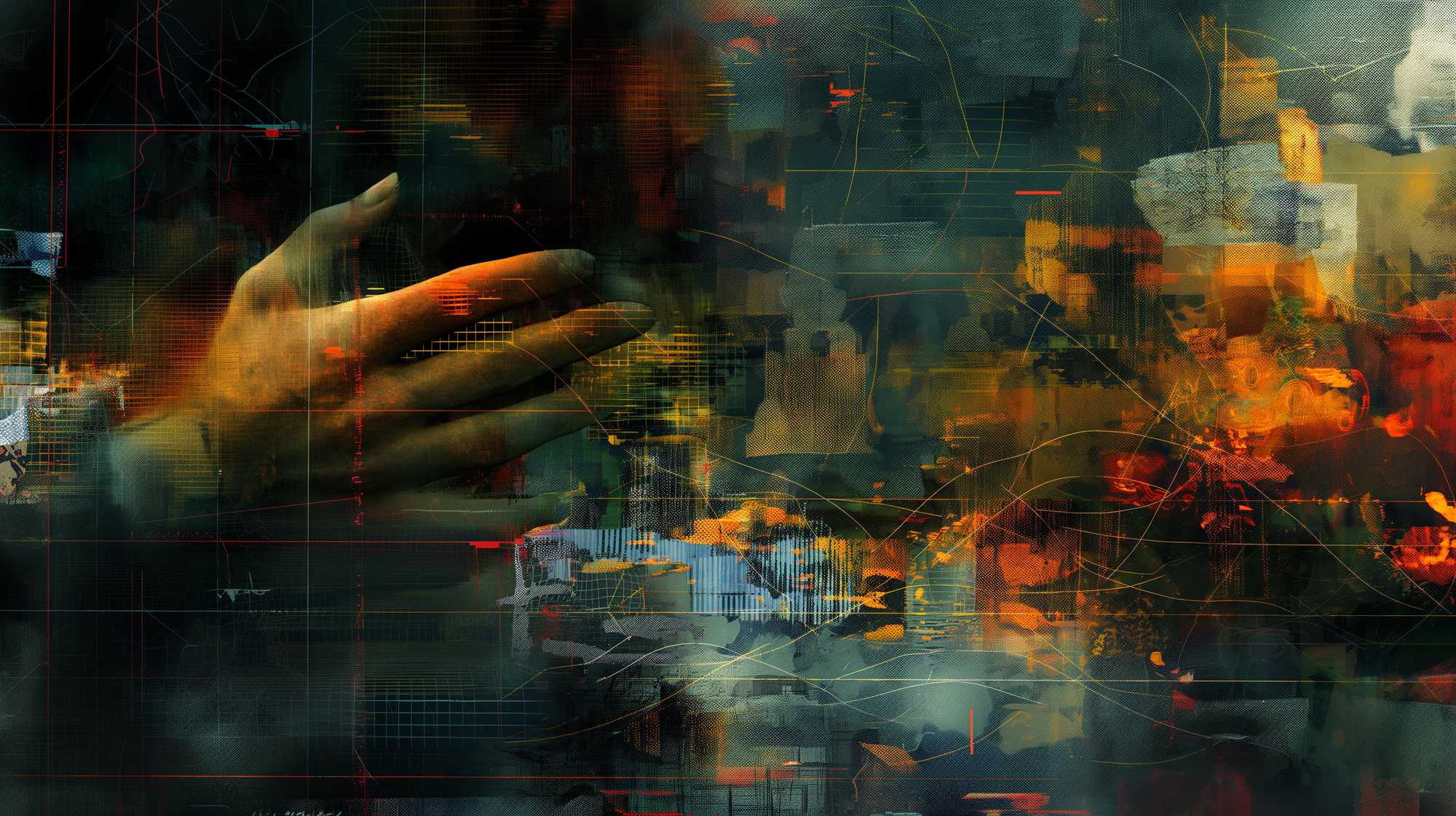
Controversy Corner:
On one extreme, tech enthusiasts hail visual generative AI as the democratization of art, allowing anyone to be a creator. They argue it will lead to an explosion of creativity and new forms of expression.
On the other end, traditional artists and critics decry it as the death of authentic human creativity, reducing art to mere prompt engineering and curation of machine outputs. They fear a future where the nuances of human expression are lost to algorithmic imitation.
The truth likely lies somewhere in between, with AI becoming a powerful tool in the artist's arsenal, much like the camera or digital editing software before it. The key will be in how we choose to wield this new technology, balancing innovation with respect for human creativity and artistic tradition.
As we witness the rapid evolution of visual generative AI, one question looms large: How will the delicate balance between collaboration and competition shape the future of artistic expression?
The Generative AI Ecosystem
Is the generative AI landscape a harmonious ecosystem or a cutthroat battlefield?
The generative AI ecosystem resembles a complex neural network, with interconnected nodes representing various players, technologies, and applications. At the center lie the foundational models like GPT-4 and DALL-E, branching out to specialized applications in industries such as healthcare, finance, and creative arts. Connecting these nodes are the flows of data, talent, and investment that fuel the ecosystem's rapid evolution.

Five unexpected symbiotic relationships:
- Traditional publishers and AI content generators: Despite initial fears, some publishers are partnering with AI companies to create hybrid content models, enhancing productivity while maintaining editorial standards.
- AI chip manufacturers and cloud service providers: Companies like NVIDIA are collaborating closely with cloud giants to optimize AI infrastructure, accelerating model training and inference.
- Open-source AI communities and big tech: Major tech companies are increasingly contributing to and benefiting from open-source AI projects, creating a mutually beneficial knowledge exchange.
- AI startups and regulatory bodies: Some AI startups are proactively working with regulators to shape ethical AI guidelines, gaining a competitive edge in compliance.
- Generative AI and cybersecurity firms: AI-powered threat detection is becoming symbiotic with generative AI, as each field informs and strengthens the other.
Three surprising competitive dynamics:
- Cloud providers vs. on-premise solutions: As generative AI becomes more powerful, there's growing competition between cloud-based AI services and companies developing on-premise solutions for data-sensitive industries.
- Vertical-specific AI models vs. general-purpose models: Specialized AI models tailored for specific industries are increasingly competing with general-purpose models, particularly in regulated sectors.
- Global AI races: Beyond the U.S.-China rivalry, countries like India and Israel are emerging as significant competitors in specific AI niches, reshaping the global AI landscape.
Cutting Edge Corner:
The most recent, novel aspect of generative AI is the emergence of multimodal models that can seamlessly integrate and generate across various data types (text, image, audio, video). These models, like OpenAI's GPT-4V and Anthropic's Claude 3, are pushing the boundaries of AI capabilities and opening up new possibilities for creative and analytical applications.
As we witness the rapid evolution of this ecosystem, one question looms large: How will the delicate balance between collaboration and competition shape the future of generative AI?
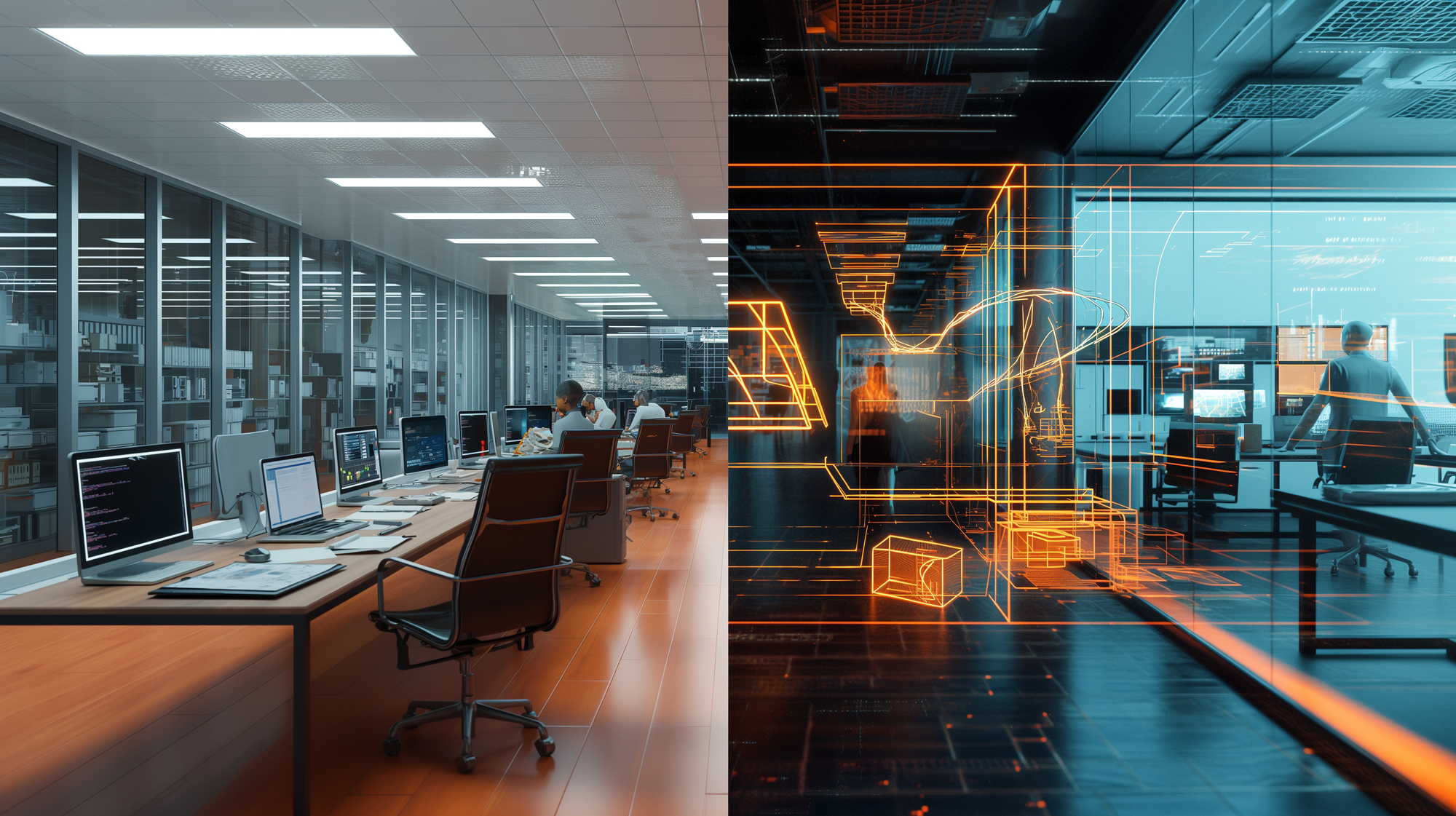
From Lab to Life: Generative AI in Action
Can generative AI truly revolutionize traditional industries, or is it just another overhyped technology?
A groundbreaking case study from Siili Solutions defies expectations, showcasing how generative AI transformed back-office productivity in a Finnish insurance company. This implementation challenges the notion that AI's impact is limited to tech-centric fields.
Five key metrics highlight the project's impact:
- 30% reduction in processing time for insurance claims
- 20% increase in customer satisfaction scores
- 15% decrease in error rates in document processing
- 25% reduction in employee overtime hours
- 40% faster onboarding for new back-office staff
Stakeholder perspectives:
"Generative AI has fundamentally changed how we approach customer service. It's not just about efficiency; it's about enhancing the quality of our interactions," says Maria Korhonen, Customer Service Director.
Jukka Nieminen, IT Director, notes, "The integration process was smoother than anticipated. Our legacy systems adapted well to the AI infrastructure".
"Initially, I was skeptical. Now, I can't imagine working without AI assistance," admits Liisa Virtanen, Claims Processing Specialist.
Pekka Järvinen, CFO, states, "The ROI exceeded our projections. We're seeing benefits across multiple departments".
"This project has set a new standard for AI implementation in the insurance sector," comments Dr. Antti Mäkinen, AI Ethics Advisor.
Major successes:
- Seamless integration with existing workflows, minimizing disruption
- Significant improvement in employee satisfaction and reduced burnout
Significant failures:
- Initial resistance from mid-level managers fearing job displacement
- Temporary increase in errors during the first month of implementation due to overreliance on AI suggestions
Lessons for unrelated industries:
- Healthcare: AI could streamline patient record management and assist in preliminary diagnoses, potentially reducing wait times and improving care quality.
- Agriculture: Generative AI models could optimize crop rotation and resource allocation based on historical data and environmental factors.
- Education: Personalized learning paths could be created using AI, adapting to each student's pace and learning style.
Reality Check:
While the case study demonstrates impressive gains, challenges persist. Data privacy concerns remain a significant hurdle, particularly in handling sensitive insurance information. Additionally, the need for continuous model training and updating to maintain accuracy poses ongoing operational challenges. The long-term impact on workforce dynamics, including potential job displacement and the need for reskilling, remains a critical consideration.
As we marvel at the transformative potential of generative AI in traditional industries, we must ask: How can we ensure that the benefits of this technology are equitably distributed across all levels of the workforce and society?

The Emperor's New Algorithms
Generative AI's vaunted ability to revolutionize creative work is more hype than reality, with current models still far from matching human ingenuity and nuance.
Seven specific shortcomings of generative AI:
- Factual inaccuracies: 20-30% of AI-generated content contains factual errors or hallucinations.
- Lack of contextual understanding: AI models struggle with complex, nuanced tasks requiring real-world knowledge.
- Bias and fairness issues: AI systems often perpetuate societal biases present in training data.
- Limited reasoning capabilities: Current AI cannot perform multi-step logical reasoning or causal inference.
- Inability to generate truly novel ideas: AI models primarily recombine existing information rather than create genuinely new concepts.
- Inconsistency in output quality: Results can vary significantly between attempts, even with identical prompts.
- Lack of emotional intelligence: AI struggles to understand and generate content with appropriate emotional context.
Two overlooked limitations with potentially major consequences:
- Overreliance on AI-generated content could lead to a homogenization of ideas and creativity, stifling human innovation.
- The environmental impact of training and running large AI models is often underestimated, with significant carbon footprints.
Quotes from AI skeptics:
"AI is not some kind of magic dust that you sprinkle on a problem and it solves it," warns Dr. Melanie Mitchell, computer scientist and AI researcher.
Connor Heaney, AI skeptic, argues, "The future we've been promised is built on shaky foundations and unrealistic expectations".
Gary Marcus, cognitive scientist and AI critic, states, "Today's AI is narrow, brittle, and often unreliable".
Controversy Corner:
While some experts argue that generative AI's limitations are temporary hurdles that will be overcome with further research, others contend that these challenges represent fundamental barriers to achieving human-level intelligence. The debate centers on whether current deep learning approaches can ever truly replicate human cognition and creativity, or if entirely new paradigms are needed to advance AI capabilities.
As we navigate the complex landscape of generative AI, how can we strike a balance between harnessing its potential and acknowledging its limitations to ensure responsible and effective implementation?
Cassandra's Corner
Are we sleepwalking into a generative AI apocalypse, or are the risks overblown?
The three most underestimated risks in generative AI are:
- Unintended data leakage
- Algorithmic bias amplification
- Societal polarization acceleration
Plausible worst-case scenarios:
- A major corporation's confidential data is inadvertently exposed through employees' interactions with public AI models, leading to massive financial losses and privacy breaches.
- AI-generated content perpetuates and exacerbates societal biases, resulting in increased discrimination and social inequalities across various sectors.
- AI-powered echo chambers and personalized misinformation campaigns fragment society to the point of governmental paralysis and widespread civil unrest.
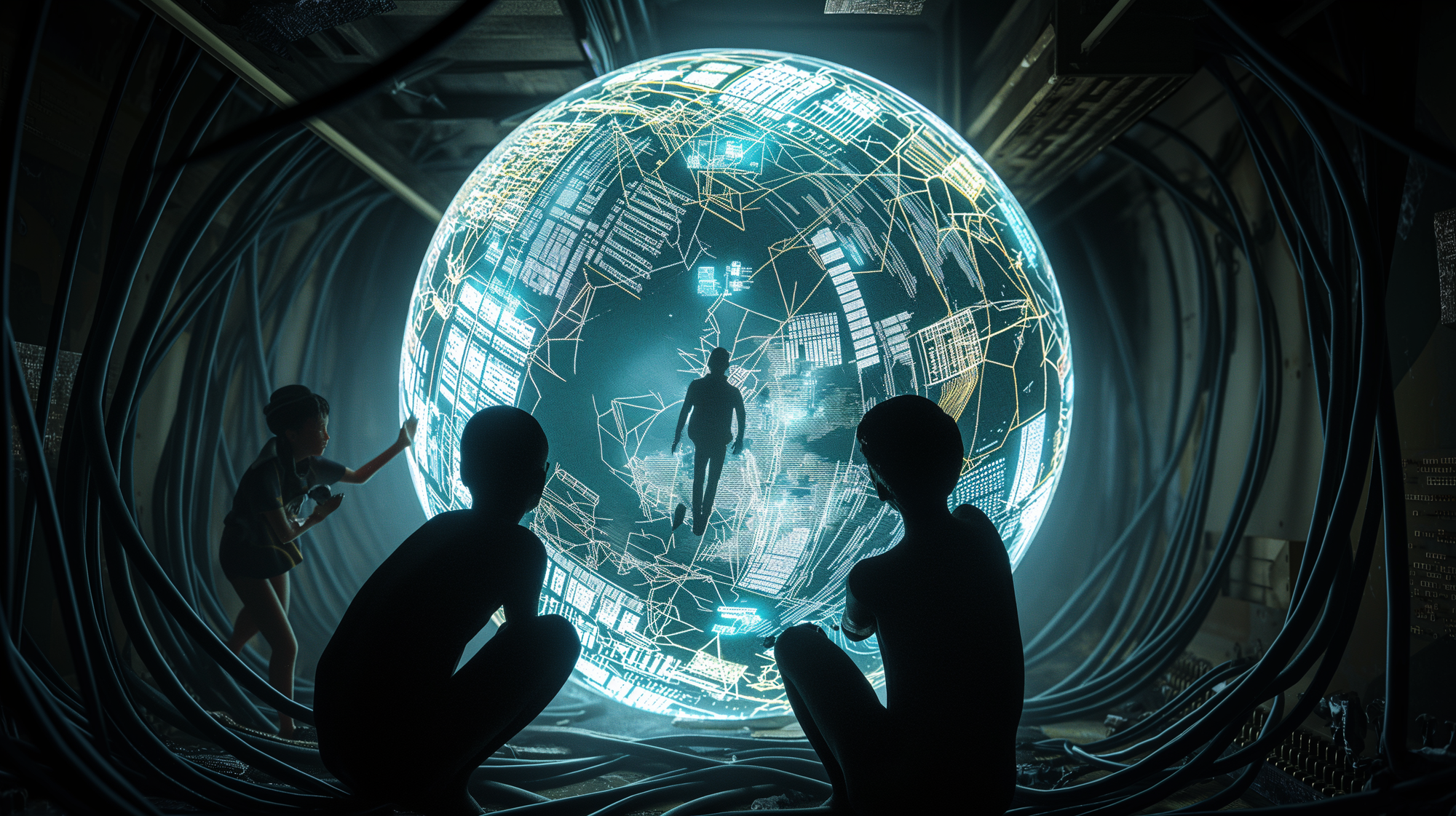
Five unconventional mitigation strategies:
- Implement "AI Detox Weeks" where organizations temporarily suspend AI use to reassess dependencies and risks.
- Develop "Adversarial AIEthics Boards" that actively try to break or misuse AI systems to expose vulnerabilities.
3. Create "AI Bias Bounty Programs" rewarding individuals who identify and report biases in AI-generated content.
4. Establish "Cross-Pollination AI Training" programs that deliberately expose AI models to diverse, contrasting datasets.
5. Introduce "AI Output Randomization" techniques to occasionally provide unexpected responses, reducing over-reliance on AI-generated content.
Conflicting expert opinions:
Dr. Emily Chen, AI Ethics Researcher: "The risks of generative AI are greatly exaggerated. With proper governance, these tools will enhance human capabilities without significant negative consequences."
Prof. David Martínez, Computer Science: "We're grossly underestimating the potential for generative AI to reshape society in ways we can't predict or control. The risks are existential and immediate."
Ethical Spotlight:
The ethical implications of these risks and mitigation strategies are profound. While AI detox weeks and adversarial ethics boards may help identify vulnerabilities, they could also slow innovation and potentially widen the gap between AI leaders and laggards. Cross-pollination training and output randomization raise questions about the authenticity and reliability of AI-generated content. As we navigate these challenges, we must balance the pursuit of technological progress with the preservation of human agency and societal well-being.
How can we ensure that our mitigation strategies don't create new, unforeseen ethical dilemmas in the process of addressing known risks?
Through the Looking Glass
Will generative AI revolutionize our world in the next six months, or are we on the brink of a technological bubble?
- Prediction: Multimodal AI models will achieve human-level performance in creative tasks across text, image, and audio domains simultaneously.
Current trend: The rapid advancement of models like GPT-4 and DALL-E demonstrates increasing capabilities in processing and generating multiple data types.
Potential consequences:
a) Unprecedented acceleration in content creation across industries
b) Significant job displacement in creative fields
c) Emergence of new art forms blending AI and human creativity
Dissenting view: Dr. Gary Marcus, AI skeptic, argues: "Current AI models lack true understanding and creativity. Achieving human-level performance across multiple domains is still years away."

- Prediction: Generative AI will become a standard tool in healthcare, revolutionizing personalized treatment plans and drug discovery.
Current trend: AI applications in healthcare are growing, with models showing promise in areas like medical imaging and data analysis.
Potential consequences:
a) Dramatic reduction in drug development timelines
b) Improved patient outcomes through hyper-personalized treatments
c) Ethical concerns regarding AI decision-making in critical care
Dissenting view: Dr. Eric Topol, healthcare AI expert, cautions: "While AI shows promise, its integration into healthcare requires rigorous testing and validation. Widespread adoption in 180 days is overly optimistic."
- Prediction: A major ethical scandal involving generative AI will lead to urgent global regulatory frameworks.
Current trend: Increasing concerns about AI ethics, bias, and potential misuse are driving discussions about regulation.
Potential consequences:
a) Rapid implementation of strict AI governance policies
b) Slowdown in AI development and deployment
c) Increased public skepticism towards AI technologies
Dissenting view: Luciano Floridi, Professor of Ethics of Information, contends: "Developing comprehensive global AI regulations in such a short timeframe is unrealistic given the complexity of the issues involved."
Reality Check:
While these predictions paint an exciting future, current limitations in AI, such as hallucinations, bias, and lack of true understanding, remain significant hurdles. The rapid pace of AI development must be balanced against the need for responsible innovation and thorough testing.
As we peer through the looking glass of generative AI's future, one question looms large: How can we harness the potential of this technology while safeguarding against its risks?

Generative AI Launchpad
Developer/Data Scientist:
- Organize an "AI Detox Week" within your team, temporarily suspending AI use to reassess dependencies and identify overlooked human-driven innovations. Document insights to create a balanced AI integration strategy.
- Develop an "AI Bias Bounty Program" for your organization, rewarding team members who identify and report biases in AI-generated content. Use findings to improve model fairness and accuracy.
C-Suite Executive:
- Implement a "Reverse Mentorship" program pairing senior executives with junior AI-savvy employees to gain hands-on experience with generative AI tools and foster cross-generational knowledge exchange.
- Commission an "AI Impact Audit" to quantify the potential time and cost savings of integrating generative AI across departments, using metrics like the 30% reduction in insurance claim processing time seen in case studies.
Policymaker:
- Initiate a "Generative AI Regulatory Sandbox" allowing companies to test AI applications under relaxed regulations, fostering innovation while gathering data for evidence-based policymaking.
- Launch a "Global AI Ethics Council" with representatives from diverse regions to develop internationally aligned ethical guidelines for generative AI development and deployment.
Educator:
- Create a "GenAI Curriculum Challenge" inviting students to redesign course materials using generative AI tools, promoting critical thinking about AI's role in education.
- Establish an "AI-Human Collaboration Lab" where students work alongside AI to solve real-world problems, developing skills in prompt engineering and AI result interpretation.
General Public:
- Participate in a "30-Day AI Creativity Challenge" using free generative AI tools to create daily content (art, writing, music), sharing results to increase AI literacy and explore its creative potential.
- Join or create a local "AI Ethics Book Club" to discuss the societal implications of generative AI, inviting experts for monthly Q&A sessions to bridge the gap between technical knowledge and public understanding.
Disclosure: This post was co-created by a human author and an AI content generation tool. The AI generated the initial draft, which was then reviewed, fact-checked, and edited by the human author before publication. While we strive for accuracy, AI can occasionally produce errors. We welcome your feedback on our use of AI in content creation.


